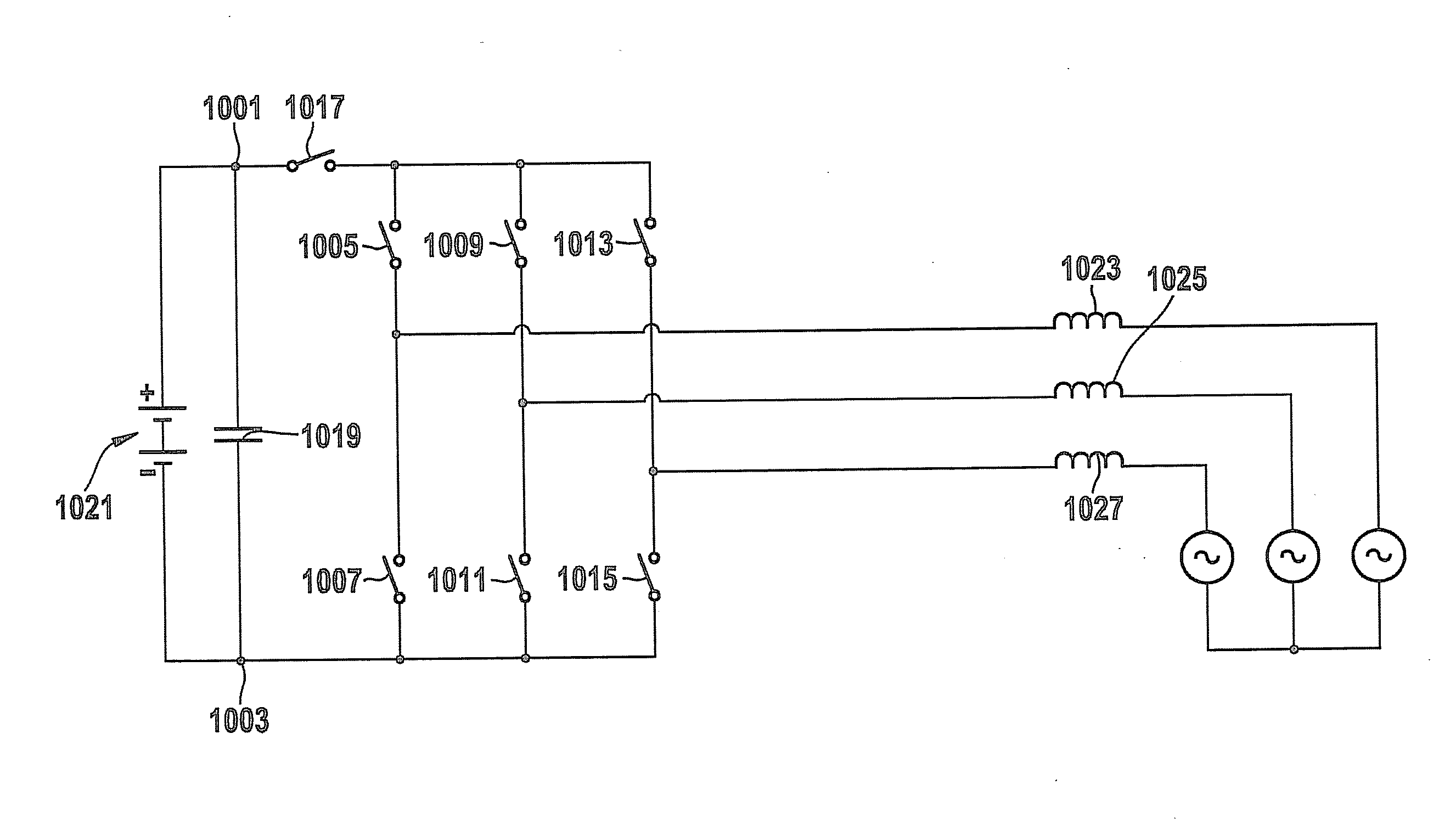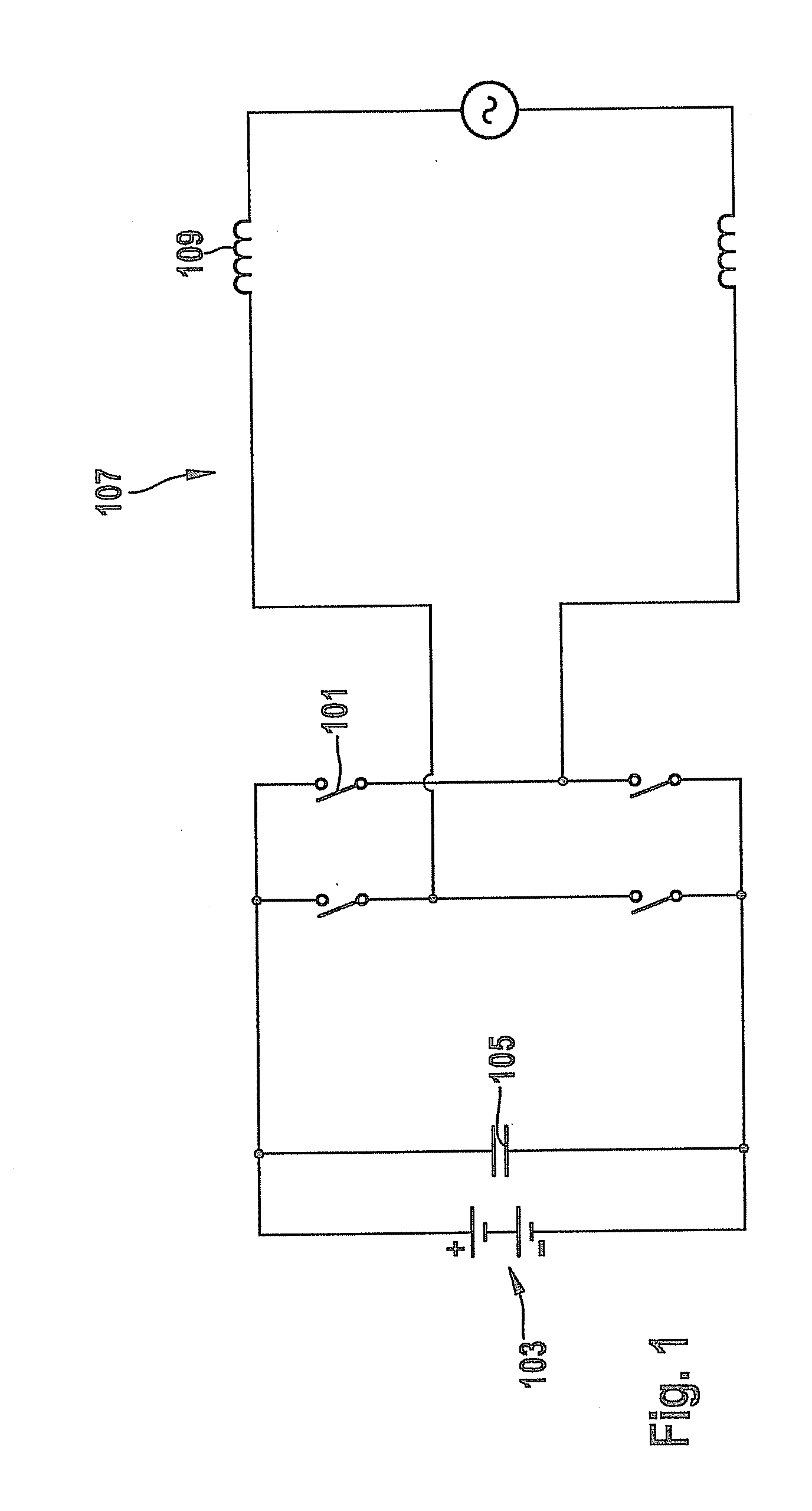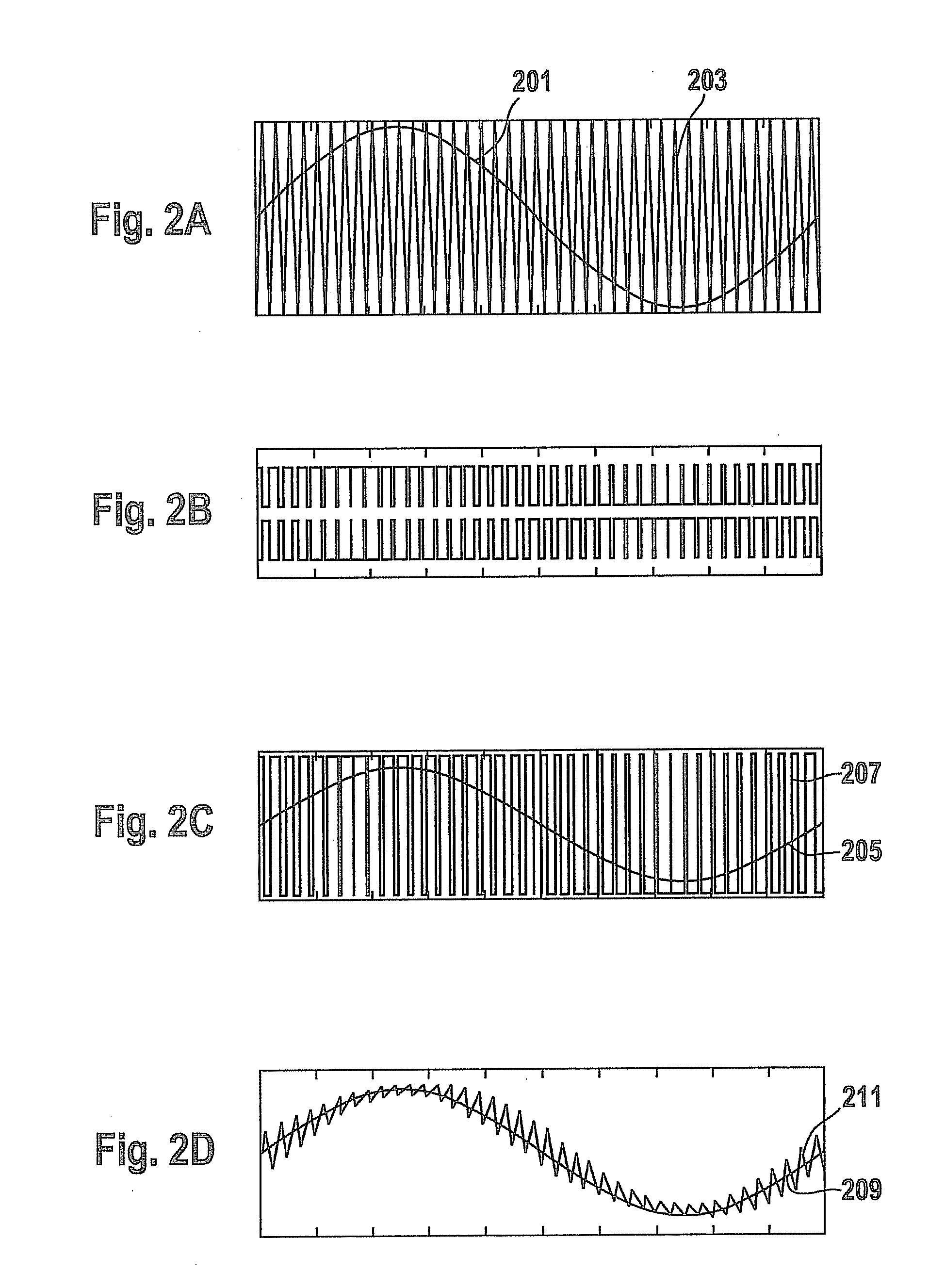Inverter System Having a Decoupling Switching Element
a switching element and inverter technology, applied in the field of inverter systems, can solve the problems of reducing internal semiconductor resistor loss, additional switching loss, etc., and achieve the effect of increasing the efficiency of inversion
- Summary
- Abstract
- Description
- Claims
- Application Information
AI Technical Summary
Benefits of technology
Problems solved by technology
Method used
Image
Examples
Embodiment Construction
[0041]FIG. 10 shows an inverter system having an input port including terminals 1001 and 1003. An inverter circuit having switches 1005, 1007, 1009, 1011, 1013 and 1015 situated in series is connected downstream from the input port. A decoupling switching element 1017, for example, a transistor switch, is situated between the input port and the inverter circuit.
[0042]An energy storage 1019 and an energy-generating module 1021 are situated parallel to the input port and between terminals 1001 and 1003. Energy-generating module 1021 may, for example, be described by constant voltage sources connected in series and, for example, may be a solar system having at least one solar cell.
[0043]One pick-off each is situated between switches 1005 and 1007, 1009 and 1011, 1013 and 1015 connected in series in order to connect the inverter system to an energy distribution network connected downstream from it, the supply leads of which are, for example, described by inductors 1023.
[0044]For convert...
PUM
 Login to View More
Login to View More Abstract
Description
Claims
Application Information
 Login to View More
Login to View More - R&D
- Intellectual Property
- Life Sciences
- Materials
- Tech Scout
- Unparalleled Data Quality
- Higher Quality Content
- 60% Fewer Hallucinations
Browse by: Latest US Patents, China's latest patents, Technical Efficacy Thesaurus, Application Domain, Technology Topic, Popular Technical Reports.
© 2025 PatSnap. All rights reserved.Legal|Privacy policy|Modern Slavery Act Transparency Statement|Sitemap|About US| Contact US: help@patsnap.com



